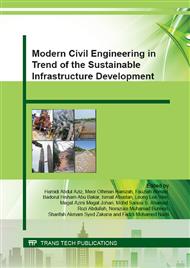p.28
p.34
p.40
p.45
p.51
p.57
p.63
p.71
p.77
The Study of Flow Characteristics of Newtonian and Power-Law Non-Newtonian Fluids by Dam-Break Flow Model
Abstract:
The study aims to investigate the flow characteristics of Newtonian and power-law non Newtonian fluids by using the dam-break of finite extent problem. Analytical and numerical studies are carried out to clarify the flow characteristics. In the analytical study, shallow flow equations are used to derive the characteristic in the viscous flow region for both the Newtonian and power-law non-Newtonian fluids. A numerical model based on the Volume of Fluids (VOF) method with higher order numerical scheme is used to verify the analytical findings. The study derived the flow characteristics based on the propagation of front position and the attenuation of flow depth at the dam upstream boundary.
Info:
Periodical:
Pages:
51-56
Citation:
Online since:
October 2015
Authors:
Keywords:
Price:
Сopyright:
© 2015 Trans Tech Publications Ltd. All Rights Reserved
Share:
Citation:


